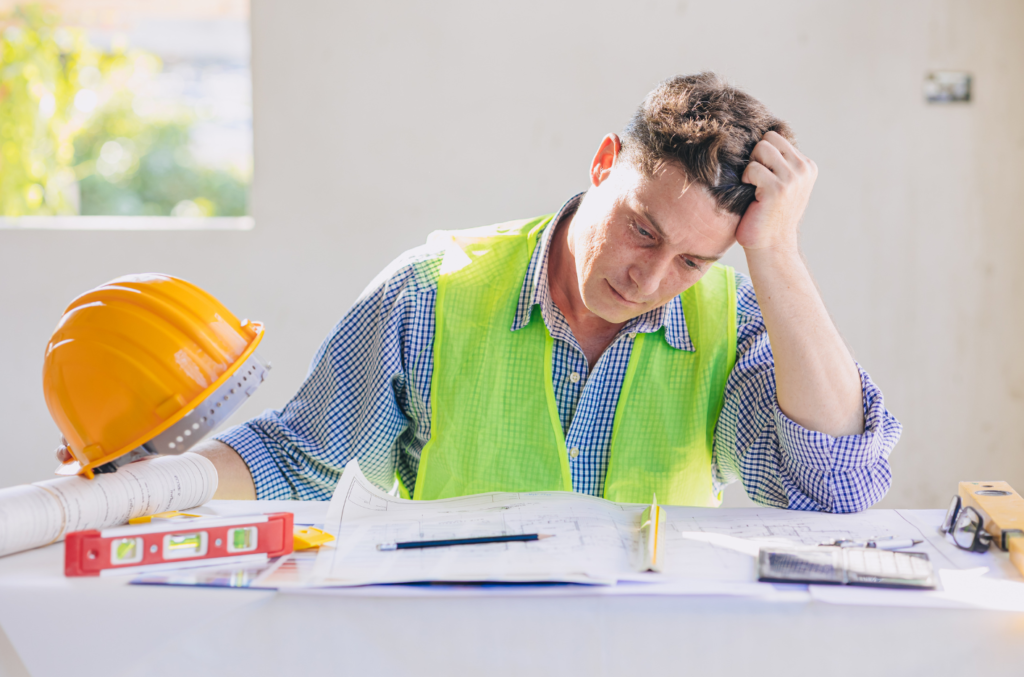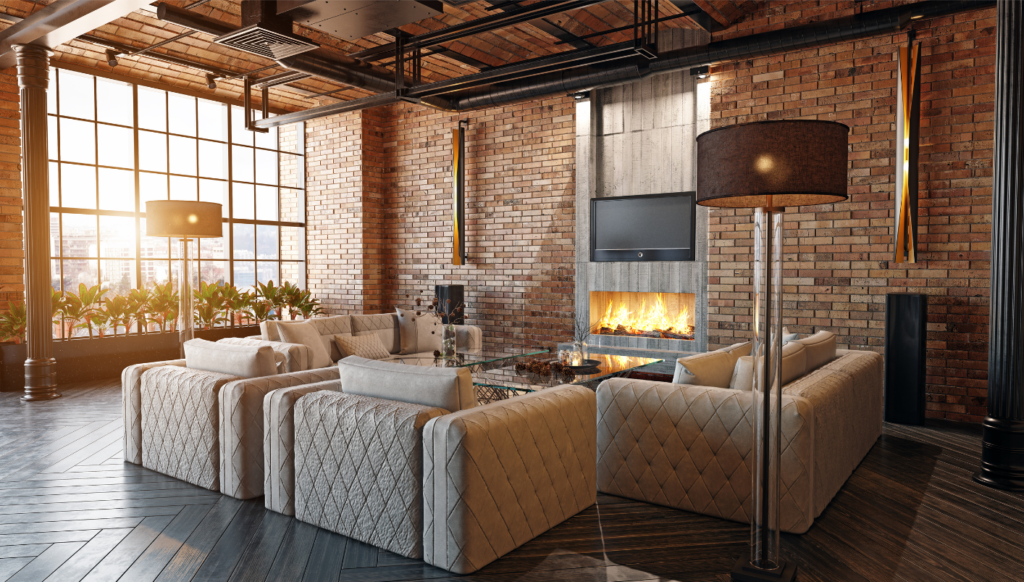Knowing how to manage a property refurbishment is a key skill of the landlord/investor. Whether it be a run-down property bought at auction or an existing longstanding property in your portfolio, there will come a time where you will need to plan and complete a full or partial refurbishment.
However, although this looks alluring on the various property programmes, or you have been overcome by the excitement of ‘getting into property’ (perhaps over a glass of wine or two!), completing a successful and profitable refurbishment is not straight forward and there are many traps that novice and even more experienced landlords fall into. So, here are our top ones.
1. Not doing proper due diligence on the property and project in the first place

Whilst technically not just related to the refurbishment itself, let’s start with the commonest and biggest-impact mistake made by many new and some more experienced landlord/investors – getting your figures completely wrong from the start!
We’ve all been here and done this; we get caught up in the excitement of the property sourcing and purchase itself. We are emotionally carried away by our ‘new venture’. We make lots of viewings, speak to lots of agents, sourcers, family, and friends down the pub. We have a vision and a drive about what we are trying to achieve. However, we forget to pay proper attention to one, nitty, gritty, minor ‘boring’ detail: – the figures themselves.
Let’s face it, you are not getting into this for bragging rights down the pub, or to bore your friends with endless streams of social media posts and photographs. There is only one reason that someone would go to the trouble of finding, buying and refurbishing a property to let out and it isn’t for fun: it is to make money. Let’s be honest; so, end of discussion.
Conducting due diligence on all aspects of the project is therefore critical: the purchase, refurbishment costs, finance costs, rent levels, end valuation etc., etc. – it’s painful to do but totally critical. Now, it will get easier over time and a more experienced investors can, to a certain extent ‘go with their gut’ to some degree, but proper due diligence is still critical to avoid losing large sums of money by making a miscalculation somewhere along the line.
For inexperienced investors nothing beats ‘starting small’ and having some background training. Alternatively, consider partnering up with someone who has experience in the area you are least confident in (such as costing out refurbishments). These services can also be bought into the project (for instance by employing the services of a quantity surveyor).
2. Not having a professional approach

This is a difficult one because a level of professionalism can really only be gained with time and experience. However, one thing that we see often is a ‘part-time’ or ‘amateur’ approach to property investing, being a landlord and refurbishments themselves. Too often, people under-estimate the dedication required, the amount of time and sacrifices required and the complexity of the process itself. Often – particularly with those less experienced – this is approached as a sideline fitted in around other things; viewed almost as a ‘hobby’. Now a certain amount of naivete and learning on the job is useful: if we all knew what we were letting ourselves in for when we started a new venture, then we would never start anything! However, the venture should really be given the proper respect that it deserves to set you out on the right foot. This will also mean that you are less likely to overlook critical details. One way to get as professional as possible with limited experience is to set off from the outset as if you are intending to build a business around the venture.
3. Scope creep

Once you have found and secured a property, identified the need for and benefits of a refurbishment, and done your basic due diligence on the entire project (see point 1), you are ready to get started; yes? No. The next stage is a proper scope of works. Again, a quantity surveyor could come in useful here or a builder contact if you have one. The scope of works is critical to avoid miscommunications with contractors during the actual refurbishment and is also fundamental to the costing and tendering process. The final area that it prevents against is scope creep.
Essentially, this is where you start off and the scale and scope of the project gradually (or rapidly) expands, with multitudes of additional items added as they crop up. This can be a particular issue with older properties, where it is not always possible to identify to entire scope until the project is underway; with for instance hidden structural issues. However, another source of scope creep is around specification. So, make sure you take sufficient time to plan out the refurbishment carefully and identify all the areas requiring attention right at the outset. This will avoid costly hidden surprises down the line.
4. Taking too long

This is a potential consequence of scope creep above, but can also be a symptom of lack of professionalism (point 2): the monster and never-ending refurbishment. Now there are sometimes very valid and unavoidable reasons for a refurbishment to balloon into a life absorbing nightmare. We ourselves have been poised to start a refurbishment only to find a budget busting latent defect which necessitated selling the property. Sometimes personal circumstances change, or life events get in the way. Unexpected things do happen. However, there is very little excuse for a simple like for like refurb to take many, many months. As the saying goes: ‘time is money’. In addition to the increased costs – and opportunity costs (such as lost rent) – of the project, you have your own sanity to consider.
If unexpected events occur, then quick decisions are required – in our example above we had a second profitable exit strategy and activated this within a week of completing the scope of works. This is the crux here. Beyond the figures themselves, your plan for delivery of the project is also necessary. Having a good and reliable team of people around you and taking their advice is also critical.
5. Not thinking about what the tenant actually wants

Now with the next few points, let’s move into the details of the refurbishment process itself.
Aside from scope creep, another big issue is completely the wrong scope of works in the first place. What we mean here is that the refurbishment is either the wrong refurbishment or the specification is wrong and in this case is often over-specified.
The scope of any refurbishment should aim to do the following:
a) Address any major defects.
b) Be efficient (in terms of costs and materials).
c) Be profitable.
d) Cater for the requirements of the end market or customer.
Regarding point d), for the landlord refurbishment (rather than a flip), the end customer is a tenant. The customer is not a buyer and more importantly not ‘yourself’. What we mean here is that irrespective of the specification that you yourself would like, you should focus instead on a specification sufficient or appropriate for a rental property. This specification will obviously vary from location to location and property to property. So, a high-end penthouse apartment overlooking the Thames in London will require a different specification kitchen and bathroom than a two-bedroom terrace in a small Midlands town. Equally, the rent that the property can command will be different. Now, this may seem obvious, but landlord/investors often ‘over spec’ their refurbishments where the additional cost adds little to the end value (for refinancing purposes) nor the rent level.
In addition, don’t be tempted to be too ‘on trend’ with your interior design. Stick to basic plain colours and themes and be prepared instead to let the tenant individualise their property with a bit of redecoration once it is let.
If you get carried away, the end result is a property that will have cost too much and be the wrong specification and will date very quickly. In addition, the running costs and ‘aggravation factor’ will be higher when it comes to repairs and maintenance. Will you still be able to source those designer Italian taps you spent a month locating in five years time? Can you easily access the plumbing under the sunken bath?
6. Over-spending and unnecessary spending

This issue is typically a consequence of having an inflated specification as described above. However, there can be other circumstances that cause unnecessary spending as follows:
a) Poor scheduling of work (for instance requiring trades to visit the site more times than necessary or work in an inefficient manner)
b) Mistakes and redoing work or correcting poor work.
c) Unclear schedule of works and project scope.
d) Trying to cut corners (see next section).
7. Cutting Corners and ‘False Economy’

This one can have unintended consequences. There is often a tendency – particularly when a project budget is squeezed – to start to cut back on items that seem unnecessary. This may manifest itself as a reduction in quality of materials. Take flooring for instance. There is a large range of quality available but the cheap option (which may look fine in the showroom) will very quickly show its age during a tenancy and will not stand the test of time. Ultimately this may require replacement long before the higher quality item would have done. This is ultimately a false economy. So, when designing a refurbishment, it is often better to go for a higher spec or ‘semi-commercial’ specification, which will be more expensive initially but will be harder wearing in the long run.
8. Focusing on ‘visual impact’ and not sorting out the important, practical or ‘boring’ items

This is related to the cutting corners issue above. Oftentimes during a refurbishment, landlord/investors will focus on the items that give the most visual ‘wow factor’. However, these days this is not the only thing that will ensure the lettability of the property. Tenants are also interested in practicality, functionality and the running costs of the property; with factors such as insulation and energy efficiency being most important. In addition, you as owner will also want a property that is robust and is not constantly causing headaches and complaints once let. So, with refurbishment of flats, whilst all the flooring is up consider installing soundproofing. Where you own the freehold of the whole building pay attention to the condition of rainwater goods. Also, don’t forget to install insulation wherever possible. Finally, make sure sufficient passive ventilation is installed. Continuously running, silent humidistat fans are an excellent way of controlling humidity levels in a property which will also protect your investment for years to come after the refurbishment is completed.
9. Trying to do-it-yourself

The final mistake is a recurring bugbear and can be a difficult habit to break. We all reckon we can paint a wall or perhaps put a flatpack kitchen cupboard together, right? Most of us have some experience in these areas but most landlord/investors do not work in these trades full time if at all. Most have other professions and tend to be rich in terms of capital but poor in terms of time, at least at the beginning of their property journey. There is also a significant difference between performing these functions in your own home on the weekends and taking on a full refurbishment project to a tight timeline and budget. In this situation, time isn’t money necessarily, mistakes can be corrected over time or lived with and you have no-one to face up to (other than yourself) when the door falls off the kitchen cupboard. Finally, and crucially, taking a DIY approach to your refurbishment project is missing another important piece of the puzzle and that is how you value your own time.
So, our advice is not to start with the intention of completing the whole project yourself, or even contributing a significant amount of your own resource ‘on the tools’. Certainly, avoid the temptation to complete the project in the evenings or weekends. The exception to this rule is if you are actually a professional tradesperson but even then, you will undoubtedly find that your refurbishment will clash with other responsibilities in your main business. We have all heard of the builder who has never completed their own personal build because they are too busy doing projects for paying customers. Your time is instead better spent managing the project, sourcing the best materials and trades people or better still, sourcing the next project!
10. Forgetting the refurbishment lifecycle

Finally, there is one other thing landlord/investors often forget and that is to budget for the full lifecycle of their refurbishment. This means thinking longer term about when their newly refurbished property will get to the end of its life and require a second refurbishment. This is really aimed at the longer-term landlord/investor or even property business owner who has an established rental portfolio and is in business for the long term. With this longer-term view comes longer-term responsibilities. Items will wear out and eventually the whole property will require another refurbishment. It is judging this point that is the real skill coupled with budgeting for the eventuality in your business and investment plans. Often the temptation is to ‘make do and mend’ beyond the useful life of the original refurbishment. This constant round of repairs can become a false economy in the long run but is a particularly tempting strategy when there is a tenant in situ – the alternative being to endure a void period on top of the refurb costs themselves.
Conclusion
So, these are the most important mistakes to look out for when embarking upon your next refurbishment project or when running an established rental property business. The key thing to remember is that you will make mistakes, but by keeping these points in mind hopefully these mistakes will be relatively minor.
At The Property Lifeboat, we will always help and advise landlords and assist where we can.
If you would like some help with any of the subjects covered above or anything else relating to properties or lettings, please email admin@thepropertylifeboat.co.uk

